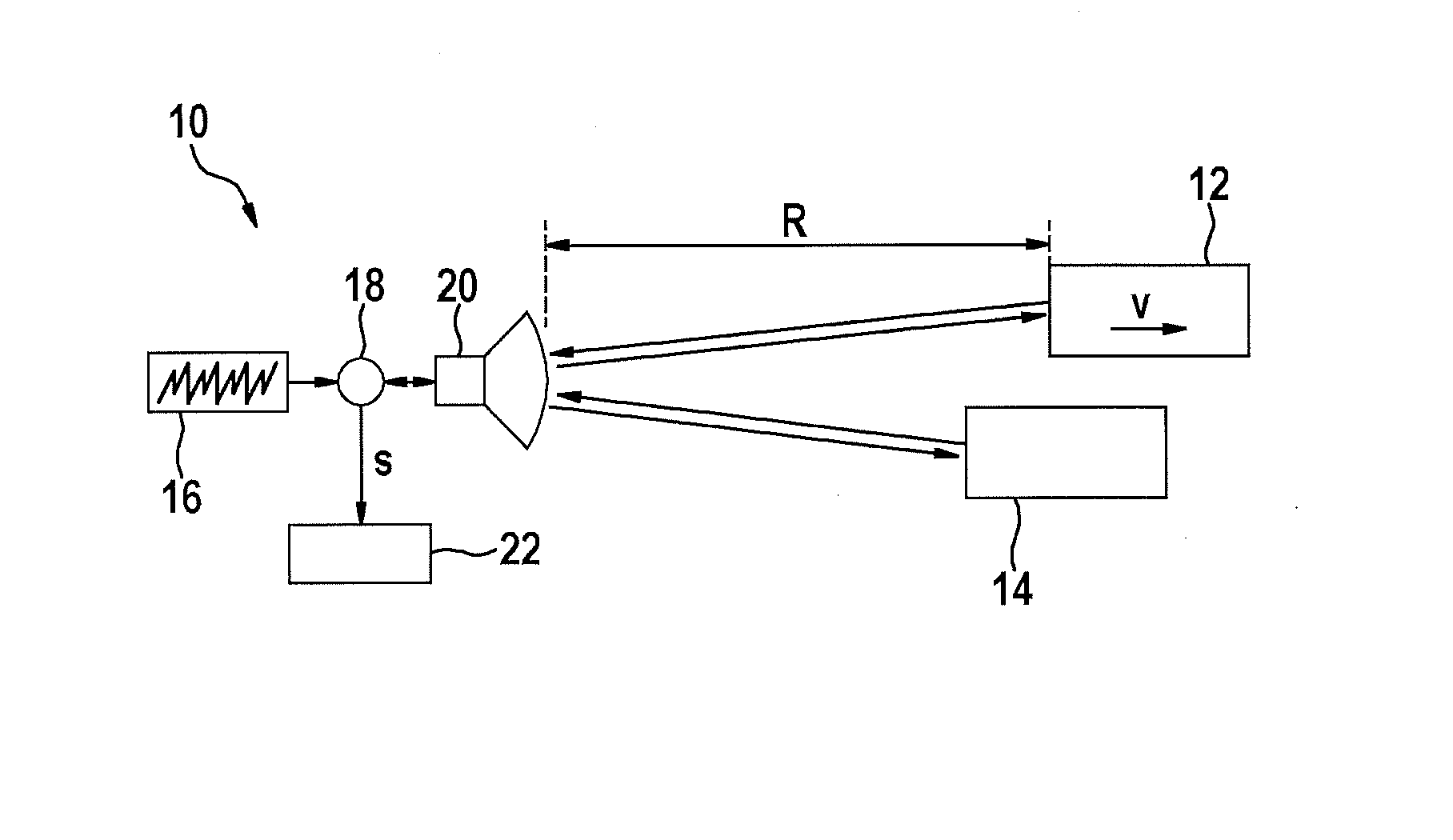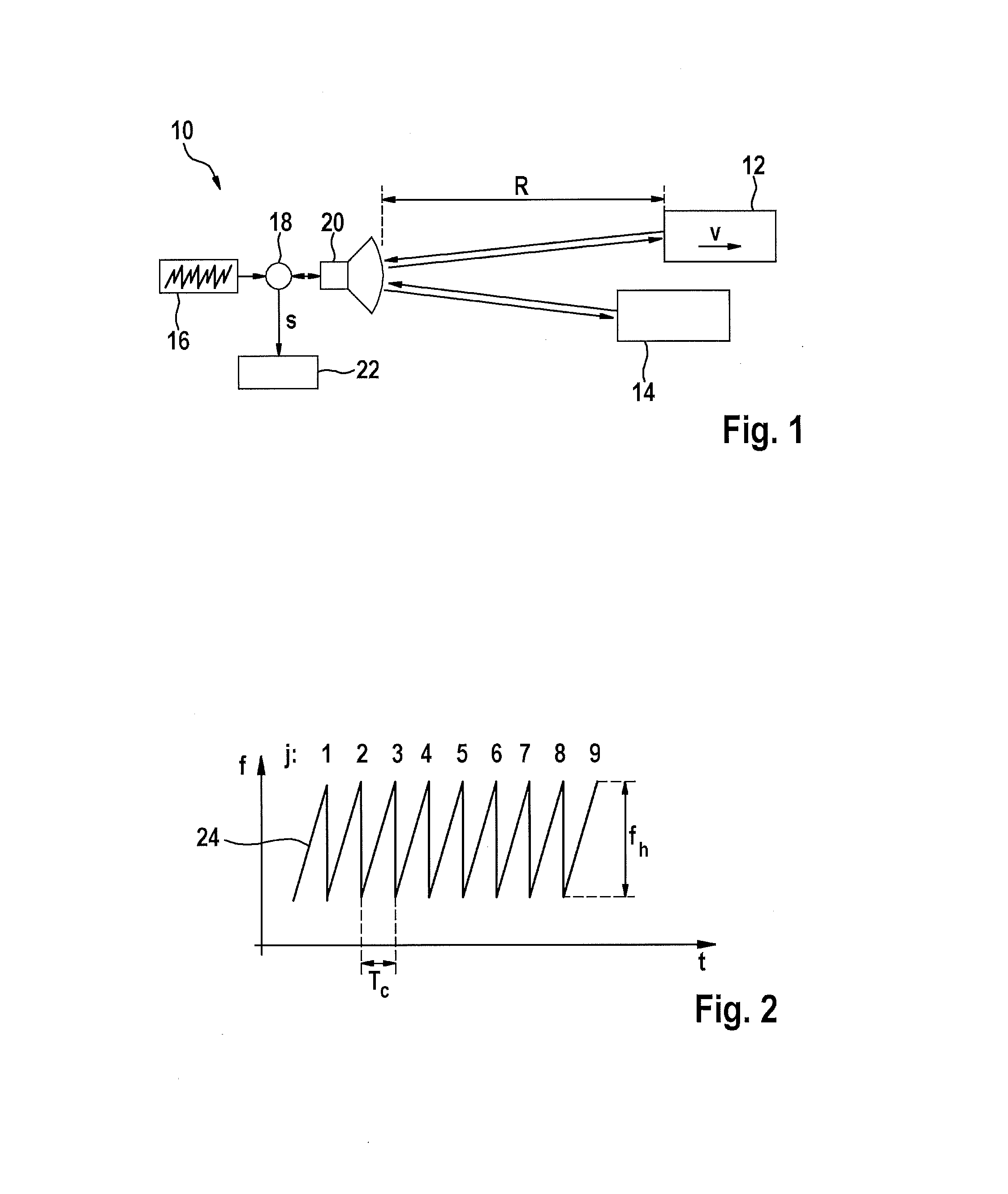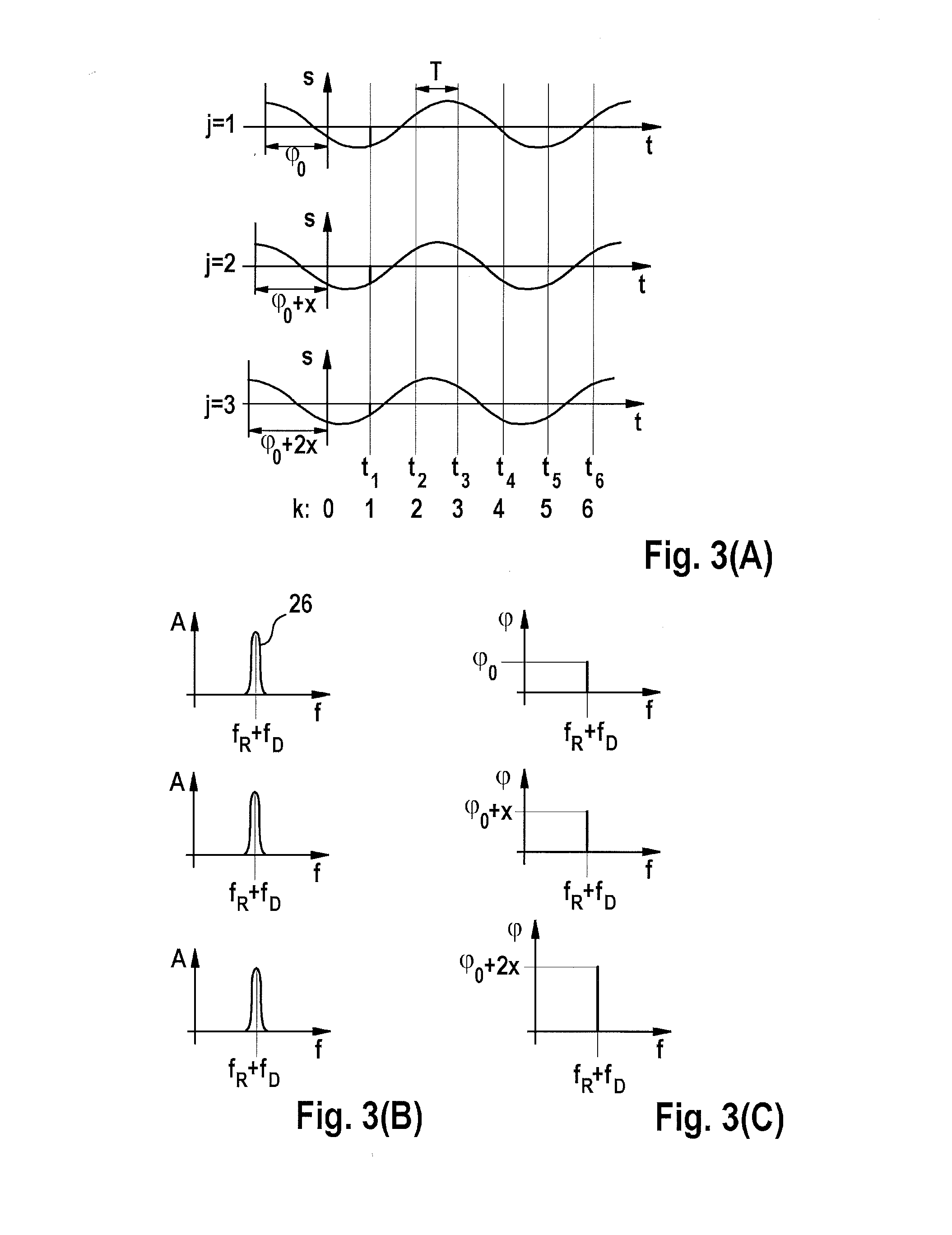Rapid-chirps-fmcw radar
a frequency difference and radar technology, applied in the field of radars, can solve the problems of not being able to determine unambiguously which peak, not yet being able to determine the distance and the relative velocity of the frequency difference on a single ramp, and achieving a good approximate value
- Summary
- Abstract
- Description
- Claims
- Application Information
AI Technical Summary
Benefits of technology
Problems solved by technology
Method used
Image
Examples
Embodiment Construction
[0022]FIG. 1 shows as a simplified block diagram of an FMCW radar sensor 10, which is installed at the front of a motor vehicle, for example, and serves to measure distances R and relative velocities v of objects 12, 14, for example, of preceding vehicles. Radar sensor 10 has a voltage-controlled oscillator 16, which supplies a frequency-modulated transmission signal via a mixer 18 to a transceiver unit 20, which emits the signal in the direction toward objects 12, 14. The signal reflected on the objects is received by transceiver unit 20 and is mixed with a component of the transmission signal in mixer 18. An intermediate frequency signal s, which is analyzed further in an electronic evaluation and control unit 22, is obtained in this way.
[0023]FIG. 2 shows an example of a modulation scheme of the transmission signal supplied by oscillator 16. Frequency f of the transmission signal is plotted here as a function of time t. The frequency is modulated in the form of successive identic...
PUM
 Login to View More
Login to View More Abstract
Description
Claims
Application Information
 Login to View More
Login to View More - R&D
- Intellectual Property
- Life Sciences
- Materials
- Tech Scout
- Unparalleled Data Quality
- Higher Quality Content
- 60% Fewer Hallucinations
Browse by: Latest US Patents, China's latest patents, Technical Efficacy Thesaurus, Application Domain, Technology Topic, Popular Technical Reports.
© 2025 PatSnap. All rights reserved.Legal|Privacy policy|Modern Slavery Act Transparency Statement|Sitemap|About US| Contact US: help@patsnap.com



